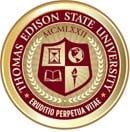Think long and hard on how you would answer this question:
Would you take the same course twice, if you didn’t have to?
Hopefully, you answered no. Or, even better, answered no way!
Then why not get maximum transfer credit when you go back to college by applying a little extra effort?
There are several ways to ensure that you get the optimal amount of previously earned credit to fit into your curriculum so that you can quickly finish your college degree. As an invaluable planning tool, you’ll want your customized Academic Evaluation to be accurate the first time around to effectively assess which courses you have left to take. Education is never wasted, so here are some smart ways to get college credit for your hard-earned past efforts.
1. Send official transcripts from every institution you have attended.
Whether you attended a regionally accredited community college or a four-year institution, or multiple institutions, send all official, sealed transcripts of your past college credits for evaluation. Even if you attended five or 25 years ago, earning a grade of C or better. If you feel unsure how the credits might apply, send the transcripts regardless. They may be better suited to a specific course objective, or a different degree program should you change your mind.
2. Submit official, notarized copies of all licenses and certifications.
You may already possess specialized licenses and certifications for your workplace, and not only will you be able to earn college credit for them, but some degree programs actually require them. The complete list is extensive; it includes everything from pilot’s licenses to real estate licenses, nuclear regulatory certifications to testing certifications, and more. The list of licenses and certifications reviewed by ACE (American Council on Education) and NCCRS (National College Credit Recommendation Service) are continuously being updated, and yours can end up saving you lots of time.
3. Submit official transcripts or documentation of any professional training, programs and courses.
Any apprenticeships or courses taken in your workplace, through your company, government agencies, professional associations or unions, are also evaluated for college credit. Many of these specialized training programs, like military or EMT training, or online course programs like Straighterline, have already been reviewed by ACE and NCCRS, and through Thomas Edison State University’s Office of Professional Learning Review (OPLR). These credit-awarding organizations, particularly branches of the military, require individual transcripts and documentation, so make sure you submit the proper paperwork to guarantee your efforts didn’t go to waste.
4. Submit all official examination or credit by exam scores.
If you took CLEP exams, the University’s own TECEP® program, or another accredited testing option, make sure your final scores are recognized. The content reflected in the tests demonstrate that you have the knowledge and skills equivalent to that of students who learn the material in a college classroom, thereby earning you credit towards your degree.
5. Determine how your knowledge acquired outside the classroom can apply toward your degree program.
Prior Learning Assessment, including portfolio assessment, demonstrates that what you already know is equivalent to the course objectives that would have been learned in an equivalent course. Your past work, independent reading and study, training programs or in-service courses, volunteer service, cultural or artistic pursuits, hobbies and recreational pastimes, community or religious activities, organizational memberships, adult education, non-credit courses, study abroad, military training not evaluated for credit by ACE, or other experiences enables you to develop a portfolio for this knowledge, and potentially earn credit for it.
Ultimately, your goal is to leverage all that you bring to this endeavor, which validates the work you have completed and the expertise you have developed. Understanding how to transfer the maximum amount of credit can be a key to success.

Written by Thomas Edison State University

